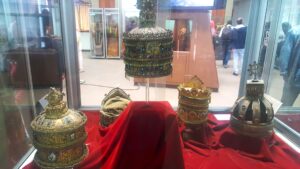
Ethiopia is unwavering in its traditions. They had a monarchy that directly traces back to King Solomon and Queen Sheba. Ethiopia is one of only two African nation to avoid European colonization. It follows a different calendar about seven years behind everyone else to match the actual birth year of Jesus. Their clocks are also on a 12-hour cycle where dawn starts at 1 a.m., which works for equatorial nations.
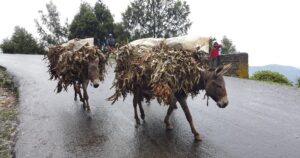
MUST SEES

Addis Ababa
Addis Ababa is a city of contrasts, with over a third of the population living in poverty. On the other hand, the hills are green and the slopes are covered with eucalyptus trees. The rich soil and long rainy season are great for crops, like coffee, beans, maize, and bananas.
Entoto Palace
In 1883, Emperor Menelik II and Empress Taytu built a humble wood and mud palace on Mt. Entoto. Menelik would receive guests in the main hall. In the storeroom, there are horns on the wall for hanging honey and grains.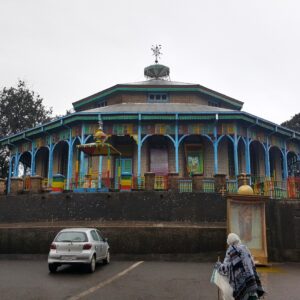
Entoto Maryam Church
The oldest Ethiopian Orthodox Tewahedo church contains holy water believed to hold miraculous healing power. The octagonal building has a mix of blue and Rastafarian colors. But, you can only view the church from the outside.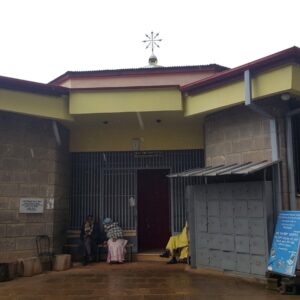
Entoto Maryam Museum
The museum stores religious artifacts from the Maryam Chuch next door. There are royal crowns and the royal bed of Emperor Menelik II and Empress Taytu. It also has royal garments worn by Haile Selassie and Menelik.
Ethnological Museum
In the beautiful tropical gardens of Addis Ababa University, the museum exhibits Ethiopia’s cultural heritage. The dark top floor has religious art, paintings of St. George slaying the dragon, and Ethiopian instruments.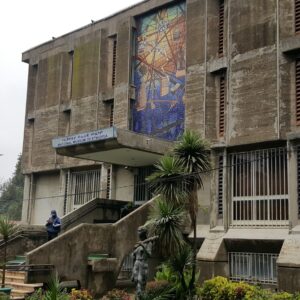
National Museum
On the first floor, there are displays of imperial regalia, including Haile Selassie’s throne. Thousands of Rastafarians from Jamaica live in Ethiopia because Selassie offered land in Shashemene to the repatriated.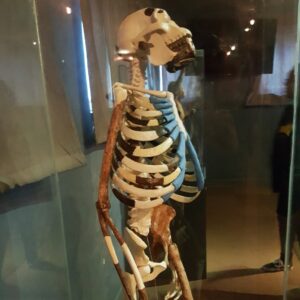
Lucy
The National Museum is the home to Lucy, the famous fossilized hominin bone fragments. Lucy is 40% of a female Australopithecus afarensis skeleton. Australopithecus was an extinct close relative to modern humans.
Imperial Crowns
In addition to the National Museum’s exhibits of artwork and artifacts, there is a wing devoted to regalia. This includes gold, jewel-encrusted imperial crowns.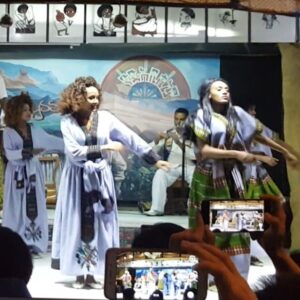
Yod Abyssinia
The large dining area is crammed with low wooden stools. Musicians, dancers and singers perform traditional acts from around Ethiopia. Try excellent traditional food and tej (honey wine) while you check out the show.
Merkato
Merkato is a bit dizzying and chaotic. The dirt roads have giant potholes filled with dubious water. At Africa’s largest market, there are people, vehicles, and animals heading every which way. There’s even a hill of recyclables.FOOD

Tibs
A spice-laden stew of tibs is carefully ladled on a platform of tart, spongy injera bread. Tibs contains beef, tomatoes, onions, jalapeno peppers, niter kibbeh (spiced ghee), and berbere spices. The best bits of injera are soaked in the brown juices.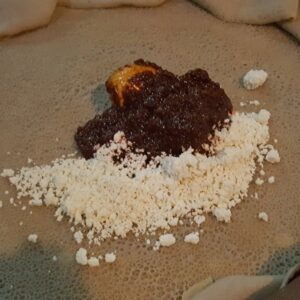
Doro Wat
Doro Wat is an Ethiopian stew of chicken, vegetables, berbere spices, niter kibbeh, and a hard-boiled egg. You scoop the Doro Wat onto the injera, including a piece of chicken, an egg, and a sprinkling of cheese.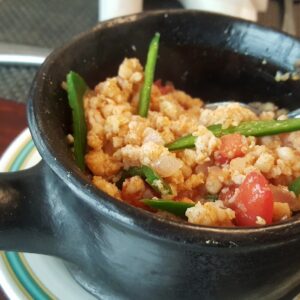
Assa Dulet
Assa Dulet is a chopped fish dish with onions, tomatoes, and jalapenos. Its spices include mitmita (ground African bird’s eye chili peppers, cardamom seed, cloves, and salt).
Tej (Honey Wine)
Tej is a honey wine flavored with the powdered leaves and twigs of gesho, a hops-like bitter plant. The berele is a traditional round drinking vessel. Tej has a sweet and juicy taste.
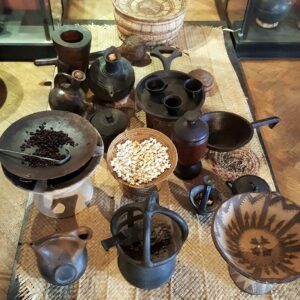
Coffee
Drinking Ethiopian coffee is a ritual. You sit on low stools around the small fire with a dozen people. The roaster slowly shuffles the beans back and forth on a little pan. The scent of incense is actually stronger than the aroma of coffee. Enjoy the coffee in little cups while munching popcorn.
Regions
Africa | Antarctica | Asia | Australia | Europe | Middle East | North America | South America